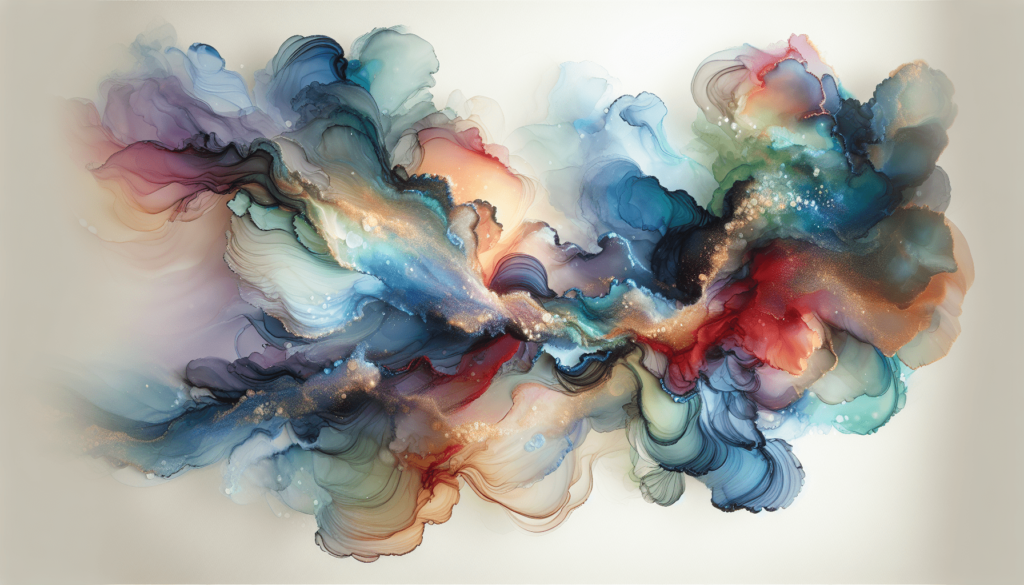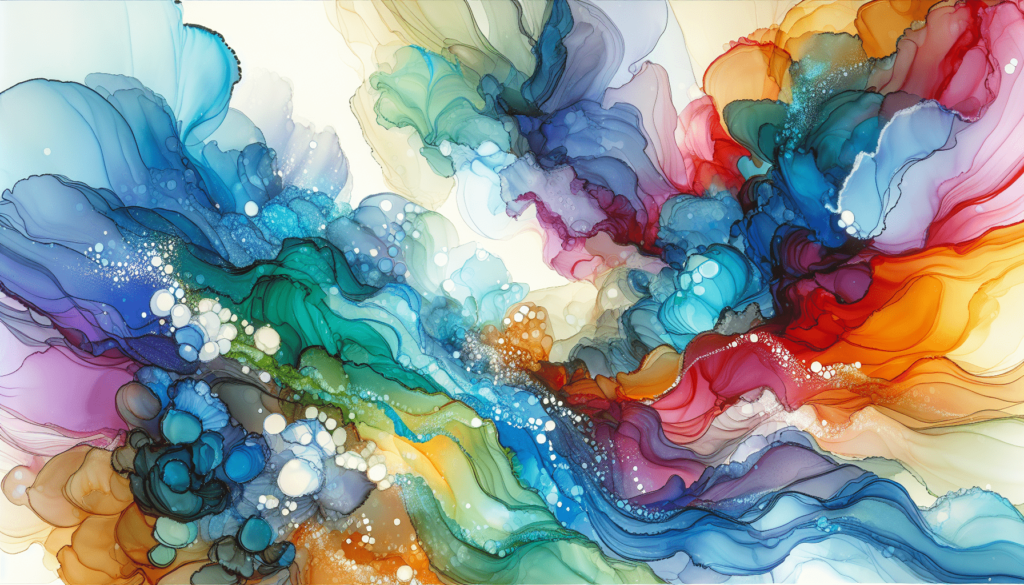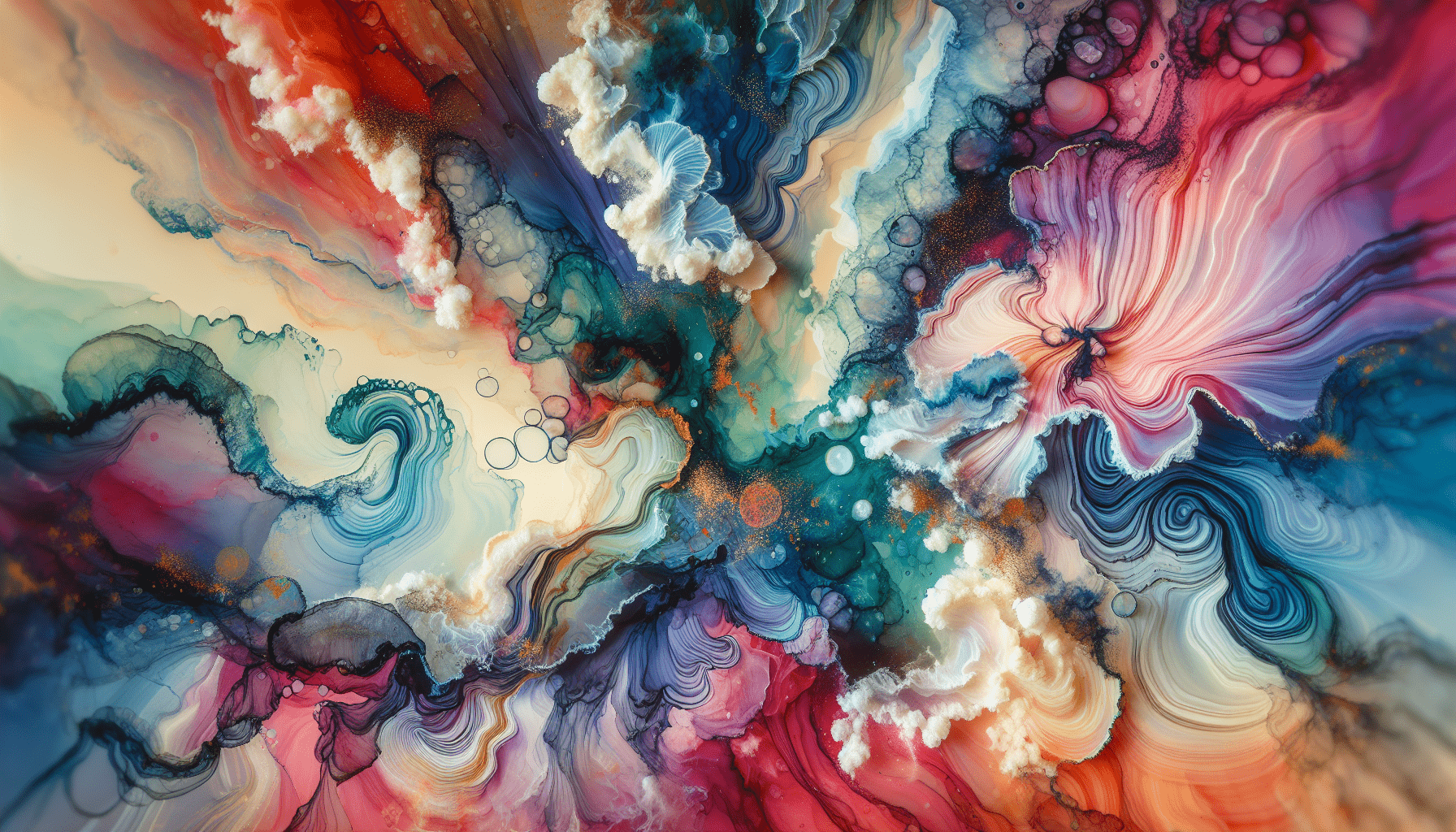Have you ever wondered how you can transform an ordinary canvas into a vibrant masterpiece with the use of alcohol ink? This unique medium has gained popularity among artists due to its vibrant colors and lively textures. Whether you are an experienced artist or someone exploring new techniques, painting with alcohol ink on canvas can be a rewarding and fascinating endeavor. In this article, you will discover the essentials and techniques necessary to successfully create stunning artworks using alcohol ink on canvas.

Understanding Alcohol Ink
Before delving into the painting process, it’s essential to understand what alcohol ink is. Alcohol ink is a fast-drying, highly pigmented, and alcohol-based medium known for its fluidity and vivid hues. Commonly used on non-porous surfaces such as glass, ceramics, and synthetic paper, alcohol ink can also create stunning effects on canvas with a few modifications.
Characteristics of Alcohol Ink
The primary feature of alcohol ink is its fluidity, which allows artists to create intricate and abstract designs easily. Another notable characteristic is its ability to blend seamlessly, producing striking color gradients. The high evaporation rate of alcohol content causes quick drying, which can be a double-edged sword—beneficial for artists desiring quick results but challenging for those who require more time.
Choosing the Right Supplies
While alcohol ink is the star of the show, the outcome of your artwork also heavily depends on the supporting supplies. Understanding what tools and materials are necessary will set a solid foundation for your creative journey.
Alcohol Ink
Investing in high-quality alcohol inks is crucial as it affects the vibrancy and durability of your artwork. Consider purchasing an array of colors that appeal to you. Some popular brands include Tim Holtz, Jaquard Piñata, and Ranger, each offering a diverse palette suited for different styles and preferences.
Canvas Preparation
Unlike traditional surfaces like Yupo paper, which is non-porous, canvas is absorbent. So, it requires preparation to make it a suitable surface for alcohol ink. Start by applying a layer of gesso, a primer that helps create a smooth surface and prevents inks from soaking into the canvas too quickly. After gessoing, apply a coat of Kilz or a similar primer that seals the surface and enhances the flow of alcohol ink.
Additional Tools
Consider stocking up on these additional supplies to enhance your painting experience:
- Blending Solutions: These can lighten colors and enhance blending.
- Alcohol Blending Pen: Helpful for fine details.
- Droppers or Pipettes: For controlled ink application.
- Paint Brushes: For spreading and manipulating ink.
- Protective Gear: Gloves and aprons to avoid stains.
Preparing Your Canvas
Now that you are equipped with the necessary supplies, prepare your canvas, which is an integral step to ensure the longevity and quality of your work.
Applying Gesso
Begin by applying a thin layer of gesso with a brush or roller. Allow it to dry completely before evaluating whether additional coats are necessary. Generally, two layers suffice to create a smooth surface primed for the ink.
Sealing the Canvas
Once the gesso layer is dry, apply a coat of Kilz or a similar clear sealant. This step is crucial as it creates a semi-non-porous surface, allowing the alcohol ink to sit atop the canvas, preserving its vibrancy and enabling delicate blending.
Techniques for Applying Alcohol Ink
Successfully using alcohol inks involves mastering several techniques that bring out the unique qualities of this medium. Experimenting with different application methods can yield various effects, allowing for enhanced creativity.
Direct Application
You can apply alcohol ink directly onto the canvas using the ink bottle. This technique results in highly pigmented areas, perfect for focal points or abstract designs. Tilt the canvas gently to allow the ink to flow and create organic patterns.
Dropping and Blowing
Another method is dropping ink on the canvas and using a straw or airbrush to blow the ink across the surface. This technique enables you to create soft streaks or intricate patterns by controlling the air direction and pressure.
Using Blending Solutions
Incorporating blending solutions into your process enhances color transitions and fluid composition. Adding blending solution to ink will dilute colors, produce gradients, and allow for smoother melding of hues.
Adding Depth and Dimension
Creating an engaging artwork often involves adding depth and dimension to your canvas, a task that can be achieved through layering and textures.
Layering Techniques
Layering involves building successive layers of ink to develop depth and richness. The quick-drying nature of alcohol ink allows you to apply additional layers soon after the first has set. Carefully build upon previous layers to add complexity and intrigue to your artwork.
Creating Texture
Incorporate materials like salt or sand onto wet ink to create texture. They react with ink to deliver unexpected and beautiful textures, providing an additional layer of interest. Experiment with different materials to find the desired effect for your piece.

Ensuring Longevity
Preserving your artwork is an important consideration. Proper sealing and UV protection will maintain vibrancy and structure over time.
Sealing Your Artwork
Use a clear spray sealant specifically designed for alcohol inks to protect your canvas. Follow the manufacturer’s instructions, applying light, even coats to avoid over-saturating the surface and disturbing the ink.
Protecting Against UV Damage
Consider applying a final UV-resistant varnish to prevent fading from sunlight exposure. This extra layer of protection will preserve the vivid colors and longevity of your masterpiece.
Overcoming Common Challenges
As with any art form, using alcohol ink on canvas presents specific challenges. Being aware of potential pitfalls can enhance your learning process and help you develop a consistent practice.
Quick Drying Time
The rapid drying time of alcohol ink may catch beginners off guard. Working efficiently and in small sections can help manage the drying pace, providing more time to experiment with blending and layering.
Controlling Ink Flow
Controlling the flow, particularly on a non-porous surface, can be tricky. Practice manipulating ink with different tools and motions, gaining proficiency in directing and controlling its paths for desired effects.
Conclusion
Painting with alcohol ink on canvas offers a unique blend of vibrancy and spontaneity. While it poses distinct challenges, the potential for creative expression and the resulting artworks’ stunning visuals make this medium a worthwhile pursuit. Armed with the knowledge from this guide and your creativity, you are prepared to explore the exciting world of alcohol ink on canvas. Through practice and patience, you will soon master this dynamic medium, resulting in captivating and colorful creations that reflect your artistic vision.



